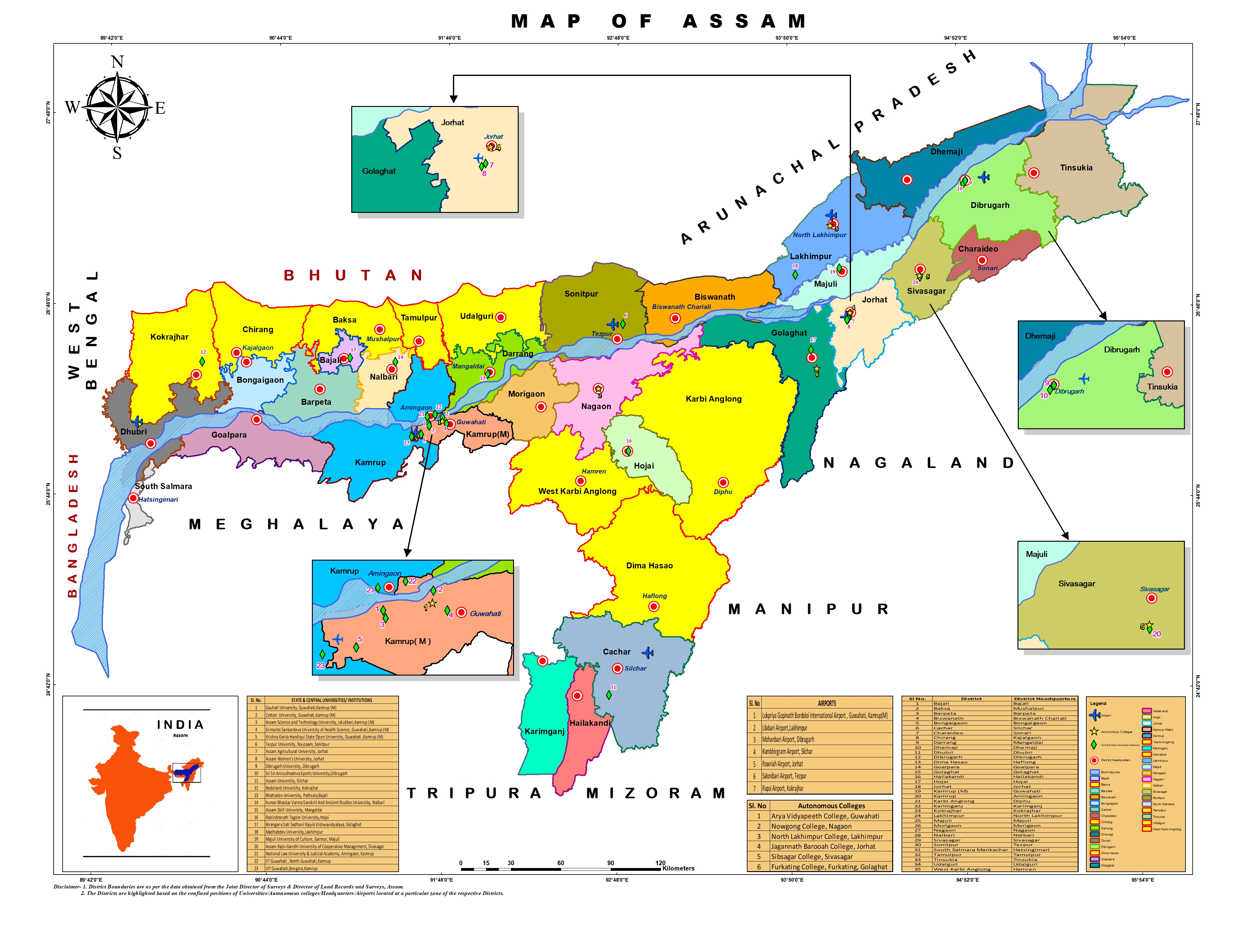State Profile
Breadcrumb
State Profile

| Particulars | Description |
|---|---|
| Area | 78,438sq. KM |
| Population | 3,11,69,272 |
| Capital | Dispur |
| Principal Language | Assamese |
| Total GDP |
Assam At A Glance:
Assam is situated in the North-East of India and is the largest north eastern state in terms of population while second in terms of area. Assam covers an area of 78,438 km2 (30,285 sq miles). The state is bordered by Bhutan and the state of Arunachal Pradesh to the north; Nagaland and Manipur to the east; Meghalaya, Tripura, Mizoram and Bangladesh to the south; and West Bengal to the west. A significant geographical aspect of Assam is that it contains three of six physiographic divisions of India – The Northern Himalayas (Eastern Hills), The Northern Plains (Brahmaputra plain) and Deccan Plateau (Karbi Anglong).
The climate of Assam is typically ‘Tropical Monsoon Rainforest Climate', with high levels of humidity and heavy rainfall. People here enjoy a moderate climate all throughout the year, with warm summers and mild winters. Spring (March–April) and autumn (September–October) are usually pleasant with moderate rainfall and temperature.
As per the Census 2011, the total Population of Assam is 3.12 Cr. Thus the population of Assam forms 2.58 percent of India in 2011. Assam has total population of 31,205,576 in which males were 15,939,443 while females were 15,266,133.
Geography:
A significant geographical aspect of Assam is that it contains three of six physiographic divisions of India – The Northern Himalayas (Eastern Hills), The Northern Plains (Brahmaputra plain) and Deccan Plateau (Karbi Anglong). As the Brahmaputra flows in Assam the climate here is cold and there is rainfall most of the month. Geomorphic studies conclude that the Brahmaputra, the life-line of Assam, is an antecedent river older than the Himalayas. The river with steep gorges and rapids in Arunachal Pradesh entering Assam, becomes a braided river (at times 10 mi/16 km wide) and with tributaries, creates a flood plain (Brahmaputra Valley: 50–60 mi/80–100 km wide, 600 mi/1000 km long).[53] The hills of Karbi Anglong, North Cachar and those in and close to Guwahati (also Khasi-Garo Hills) now eroded and dissected are originally parts of the South Indian Plateau system.[53] In the south, the Barak originating in the Barail Range (Assam-Nagaland border) flows through the Cachar district with a 25–30 miles (40–50 km) wide valley and enters Bangladesh with the name Surma River.
Climate:
With the tropical monsoon climate, Assam is temperate (summer max. at 95–100 °F or 35–38 °C and winter min. at 43–46 °F or 6–8 °C) and experiences heavy rainfall and high humidity.[53][56] The climate is characterised by heavy monsoon downpours reducing summer temperatures and affecting foggy nights and mornings in winters, frequent during the afternoons. Spring (March–April) and autumn (September–October) are usually pleasant with moderate rainfall and temperature. Assam's agriculture usually depends on the south-west monsoon rains.
Population:
The total population of Assam was 26.66 million with 4.91 million households in 2001.[73] Higher population concentration was recorded in the districts of Kamrup, Nagaon, Sonitpur, Barpeta, Dhubri, Darrang, and Cachar. Assam's population was estimated at 28.67 million in 2006 and at 30.57 million in 2011 and is expected to reach 34.18 million by 2021 and 35.60 million by 2026.[74] As per the 2011 census, the total population of Assam was 31,169,272. The total population of the state has increased from 26,638,407 to 31,169,272 in the last ten years with a growth rate of 16.93%.